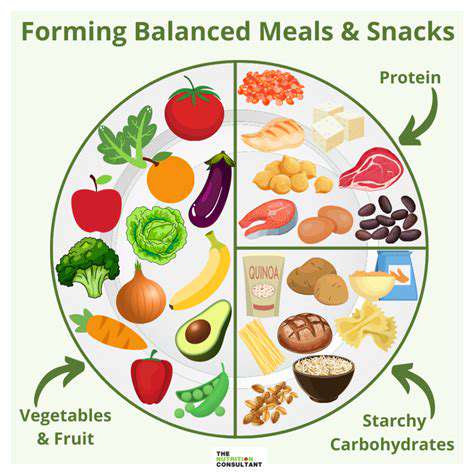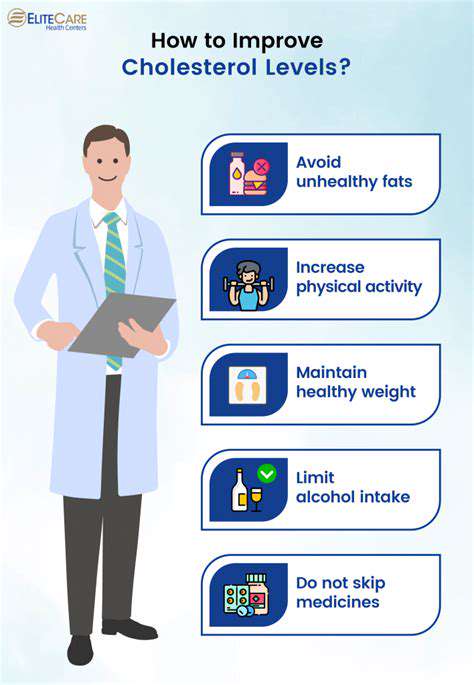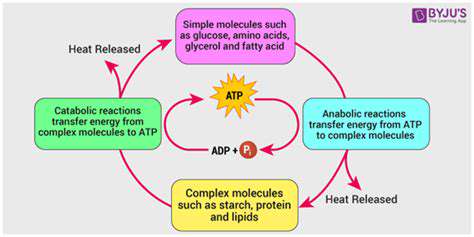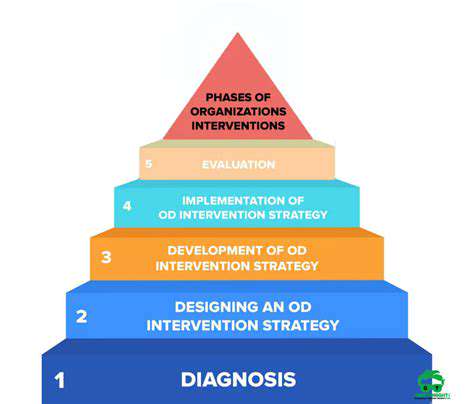Intermittent Fasting for Weight Management: A Guide
Metabolic Effects of IF
When you practice IF, your metabolism undergoes fascinating adjustments that may influence body composition. These changes frequently involve hormonal fluctuations, particularly with insulin and growth hormone, potentially affecting how your body processes fat and expends energy. Although scientists continue exploring the precise mechanisms, numerous studies indicate IF might enhance insulin sensitivity.
Remember that metabolic responses to IF are complex and highly individualized, depending on genetic factors, dietary choices, and other lifestyle elements. The relationship between fasting periods and activities like exercise creates a crucial dynamic worth considering.
The Role of Insulin Sensitivity
Insulin sensitivity significantly impacts weight regulation, and IF appears to positively influence this factor. Enhanced insulin sensitivity allows your body to better utilize blood glucose, decreasing the chance of excess glucose converting to fat stores. This optimized glucose management could promote not just weight reduction but broader health improvements.
Enhanced insulin response stands out as one of IF's most notable advantages, offering meaningful benefits for blood sugar regulation. That said, reactions vary from person to person, and we still need more research to grasp the long-term implications completely.
Caloric Restriction and Energy Balance
IF naturally tends to reduce calorie consumption, which - when paired with potential increases in energy expenditure (depending on your fasting method) - can create an energy deficit. This deficit becomes fundamental for weight management as it pushes your body to tap into stored energy reserves, including fat deposits.
Creating this caloric deficit forms the cornerstone of how IF might aid weight loss. However, achieving this deficit shouldn't come at the expense of proper nutrition; maintaining a diet rich in essential nutrients and staying well-hydrated remains paramount.
Hormonal Changes and IF
IF influences various hormones, including growth hormone and cortisol. Growth hormone, linked to muscle development and fat metabolism, often increases during fasting periods. Meanwhile, cortisol levels - typically associated with stress responses - may fluctuate with fasting cycles. Recognizing these hormonal shifts helps explain IF's comprehensive impact on the body.
Hormonal adjustments during fasting periods can affect metabolism and body composition in multiple ways. Still, researchers must further investigate what these changes mean over extended periods.
Potential Benefits Beyond Weight Loss
Apart from helping with weight control, IF might offer advantages like lowering inflammation, boosting cognitive function, and potentially reducing risks for certain chronic illnesses. That said, we require additional studies to confirm these possibilities and understand how they work.
While many associate IF with shedding pounds, its potential to enhance overall wellness - including better blood sugar management and decreased inflammation - deserves equal attention. Continued research will help clarify these possible benefits.
Safety and Considerations for IF
Although generally safe for many individuals, consulting a healthcare provider before adopting any new eating regimen proves essential. This becomes particularly important for those with existing health issues like diabetes or who take regular medications. Carefully assessing fasting duration and intensity helps ensure appropriateness.
Seeking professional medical advice before starting IF, especially for individuals with health concerns, ensures safety and prevents potential problems. This step guarantees the method aligns with personal health requirements while minimizing risks.
Different Intermittent Fasting Methods and Their Effectiveness
Different Fasting Schedules
Numerous IF schedules exist, each featuring unique timing structures for eating and fasting periods. The 16/8 method remains popular, requiring 16 hours of fasting followed by an 8-hour eating window. Many appreciate this approach for its practicality, permitting regular meals without excessive restriction. The 5:2 diet represents another common option, involving five days of normal eating paired with two non-consecutive days of significant calorie reduction. This technique aims to trigger metabolic adjustments that could support weight loss and other health improvements. Recognizing how various fasting schedules differ helps identify which might suit individual preferences and objectives best.
Alternative approaches like Eat-Stop-Eat incorporate full 24-hour fasts once or twice weekly. While potentially more demanding, this method seeks to induce pronounced metabolic changes. Keep in mind that no single IF method guarantees universal success. Responses vary widely among individuals, making professional medical consultation invaluable for selecting an appropriate plan based on personal health factors and goals. Opting for a fasting regimen that complements your lifestyle enhances long-term adherence and positive outcomes.
Evaluating Effectiveness and Considerations
IF's overall effectiveness continues to be researched and debated. While certain studies suggest possible advantages regarding weight reduction, improved insulin sensitivity, and decreased chronic disease risks, more extensive long-term research is frequently necessary to validate these observations. IF's health impact depends not just on the chosen method but also on elements like overall dietary quality, physical activity levels, and pre-existing conditions. Any dietary modification, including IF, warrants careful consideration and professional oversight, especially for those managing health concerns.
Additionally, IF's sustainability presents a crucial factor. Some individuals maintain certain methods effortlessly, while others find consistent adherence challenging over time. The difficulty of sticking to a fasting routine substantially affects long-term success. Choosing a plan that integrates seamlessly with your daily life improves the likelihood of continued practice. Combining IF with balanced nutrition and suitable exercise maximizes potential benefits.
Ultimately, IF's effectiveness remains highly personal and multifaceted. A comprehensive approach accounting for individual requirements, health status, and lifestyle preferences proves vital for determining the optimal strategy. Professional guidance in crafting a safe, suitable plan cannot be overstated - it helps minimize risks while amplifying benefits.
Age, general health, and current medications should all factor into selecting an IF approach. Carefully monitoring your body's reactions to altered eating patterns and consulting healthcare professionals before initiating new dietary regimens remains essential. Potential adverse effects from improper fasting practices shouldn't be ignored.
Finally, consider how IF interacts with other lifestyle components like sleep quality and stress management. Optimizing these areas can dramatically enhance IF's overall impact. This holistic perspective proves critical for achieving lasting, positive results.
Potential Benefits Beyond Weight Management
Improved Insulin Sensitivity
Intermittent fasting (IF) can substantially enhance insulin sensitivity, a critical factor in blood sugar control. By limiting your eating window, your body improves its ability to use insulin for moving glucose from your bloodstream into cells. This heightened sensitivity may help prevent or manage type 2 diabetes, frequently associated with obesity and impaired insulin function. Sustained improvements in insulin response can foster better metabolic health and lower risks for related complications.
Research indicates IF can boost insulin receptor activity and enhance bodily responses to insulin. This effect proves particularly meaningful for insulin-resistant individuals, a growing concern with modern diets. It serves as a potent strategy for blood sugar management and long-term health protection.
Reduced Inflammation
Chronic inflammation contributes to numerous health issues, including obesity, cardiovascular disease, and some cancers. IF, by influencing various cellular mechanisms, may help decrease markers of chronic inflammation. This anti-inflammatory effect could promote better overall health and reduced disease risks, representing an important benefit extending beyond simple weight control.
Enhanced Cellular Repair
During fasting periods, your body redirects energy from digestion toward critical maintenance processes like cellular repair and regeneration. This allows cells to fix damaged DNA and structural components, vital for sustaining health and potentially slowing aging. Such cellular maintenance offers advantages reaching far beyond weight management.
Improved Heart Health
IF correlates with enhancements in multiple cardiovascular risk factors. These include lowered blood pressure, improved cholesterol profiles (particularly reduced triglycerides and LDL cholesterol), and diminished oxidative stress - all contributing to cardiovascular wellbeing. This cardiac benefit represents a significant advantage separate from weight loss effects.
Evidence suggests IF may help reduce heart disease risks, a leading global mortality cause. It's a valuable consideration for those pursuing comprehensive cardiovascular health strategies.
Cognitive Function Boost
Some research indicates IF might positively influence cognitive performance. By affecting growth factors and neurotrophic substances, it could encourage brain cell growth and survival. This might translate to better memory, concentration, and overall mental acuity - benefits extending beyond physical health improvements.
Improved Blood Pressure
Blood pressure regulation is crucial for overall health, and IF shows promise in this area. Through various metabolic influences, fasting may help lower blood pressure, reducing hypertension-related risks. Achieving healthier blood pressure levels represents an important component of long-term wellness.
Potential Anti-Cancer Effects
While requiring more investigation, some studies propose IF might possess anti-cancer properties. By affecting cellular processes and promoting autophagy (the body's cellular cleanup mechanism), IF could potentially inhibit cancer cell growth and spread. This possible anti-cancer benefit highlights IF's potential value in prevention and adjunct therapy, though it should never replace medical treatment.
Important Considerations and Precautions

Safety Precautions
Prioritizing safety is fundamental when embarking on any new health regimen. Recognizing potential risks and implementing appropriate safeguards helps prevent adverse outcomes. Thoughtful preparation, including thorough risk evaluation, is key to avoiding unexpected complications. This process entails identifying possible hazards, assessing their seriousness, and formulating strategies to reduce or eliminate them. Clear safety protocols and proper equipment should be established and strictly followed to maintain a secure environment. Neglecting safety measures can lead to consequences ranging from minor issues to serious incidents. Always place safety above all other considerations.
Comprehensive training and education form the foundation of any safe practice. Individuals should receive detailed instruction on safety procedures, proper techniques, and emergency protocols. This training requires regular updates to reflect any procedural or technological changes. Clear communication channels and easily accessible safety resources ensure everyone understands and follows guidelines. Fostering a safety-conscious culture where people feel comfortable reporting concerns is vital for maintaining secure and productive conditions.
Routine safety inspections and maintenance checks are equally important. Equipment should undergo regular examination for signs of damage or wear. This proactive stance helps prevent malfunctions and potential accidents. Maintenance schedules should be rigorously followed, with necessary repairs addressed promptly. These practices substantially reduce equipment-related risks.
Essential Considerations for Planning
Effective planning serves as the foundation for any successful health journey. A well-structured plan outlines objectives, resources, timelines, and potential obstacles. This organized approach ensures all critical elements receive proper attention, minimizing surprises. Clear communication and teamwork ensure alignment toward shared goals.
Thorough research and data analysis inform sound decision-making. Understanding the context of your health plan and gathering relevant information helps develop an effective strategy. This includes considering external factors like personal commitments, environmental influences, and health requirements. Incorporating these elements leads to informed choices aligned with overall objectives.
Time management and resource allocation are crucial planning components. Realistic timelines should be established, with adequate resources (both personal and material) allocated to support success. This involves anticipating potential challenges and developing contingency plans.
Developing backup strategies helps mitigate risks and ensure progress continuity. Identifying possible obstacles and preparing alternative approaches enables adaptation to changing circumstances. These plans should be regularly reviewed and updated to maintain relevance.
Comprehensive risk assessment should inform all planning processes. Identifying potential issues and developing mitigation strategies minimizes the impact of unforeseen events. This involves analyzing possible threats and evaluating their probability and potential consequences. Proactively addressing concerns limits negative outcomes.











